Learning how to use a French press can help you start the day right with a good cup of joe and a whole lot of energy. Similarly, seeing the Starbucks logo on the way to work or on your phone’s ads won’t make you sigh out of frustration anymore. With a simple tool, some basic ingredients, and thorough learning, you can easily have your coffee fix anytime and anywhere.
A brew experience worthy of any coffee aficionado’s standards will surely be within your reach. Enhancing your French press skills can also help you efficiently learn the best way to make brewed coffee with a manual, non-electric, and easy-to-use device. In 15 minutes tops, you can have the best brew that aligns with your personal preferences and utmost liking.
Learn how to make a cup of coffee at home or any location with this guide.
What is a French Press?
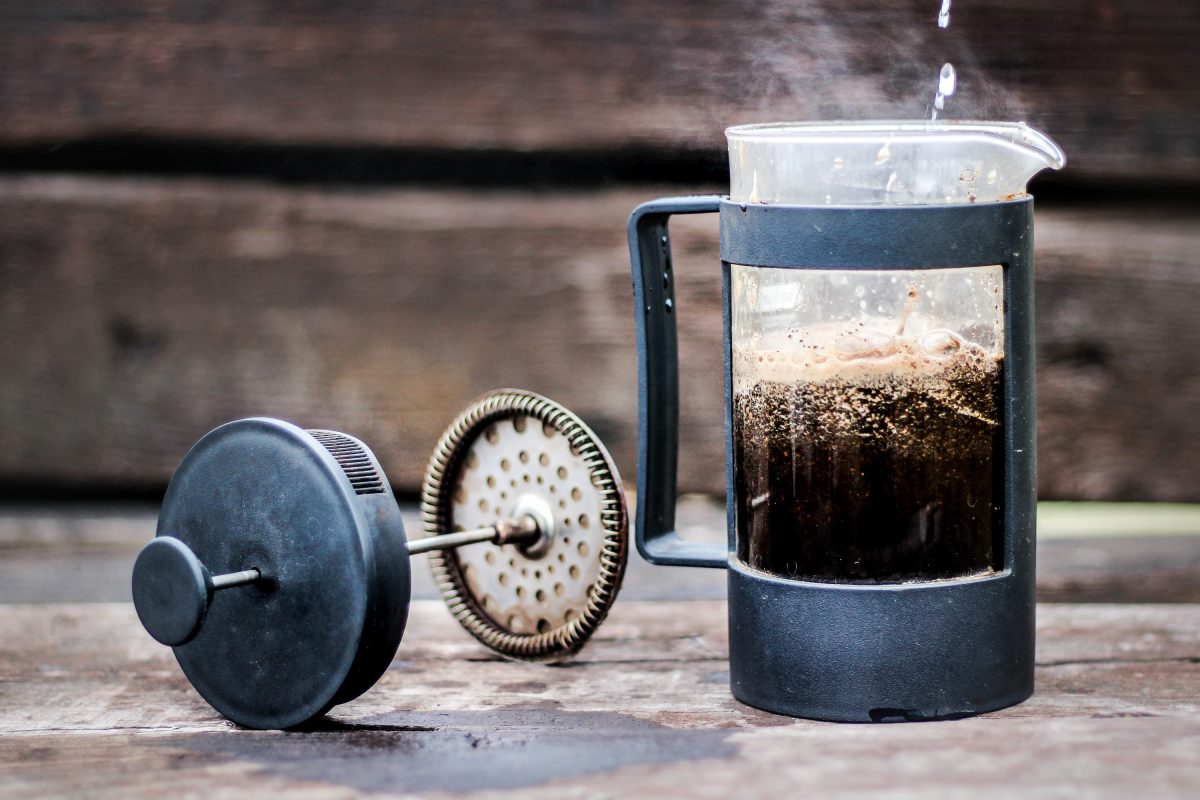

A French press is a device that is manually used to brew coffee with just hot water and ground coffee beans as the basic ingredients. This piece of coffee-making equipment has a beaker and a handle that allows you to conveniently make French press coffee. Moreover, this device has a plunger and strainer which are tools that allow you to achieve a full-bodied, delicious cup of joe.
French presses are efficient coffee makers that can brew, filter, and press ground coffee beans altogether. Notably, these devices allow you to make your brew according to your liking by means of coffee ground adjustments, water temperature control, and overall brew quality.
Different Coffee-Making Methods
French Press: Advantages and Disadvantages


Just like other coffee-making methods, using a French press offers many advantages that could align with your personal needs and preferences. For one, French press coffee varies from regular coffee since it is stronger, richer, and full-bodied. The process of how to use a French press allows water to take on the natural oils and flavors from ground coffee beans—allowing it to develop a stronger taste.
Using a French press is a manual method that does not require any form of electricity. In turn, learning how to use a French press as a coffee maker allows you to create a rich, flavorful cup of coffee as you save electricity and time. Depending on the type or size of French press that you have, you can produce multiple servings in one go. If you are a coffee maker who enjoys taking full control of their coffee-brewing process, using a French press is surely the best for you. This method allows you to choose the size of your coffee grounds, control steeping time, and affect the overall coffee taste and body.
On another note, the process of how to use a French press also poses some drawbacks and disadvantages. If you don’t enjoy a gritty feel to your cup of joe, using a French press might not be an optimal method for you. The after-process of cleaning this device is also tedious work. If you want to use it often, you will find yourself spending a lot of time dismantling and cleaning this device. Skipping this will only result in poor-quality coffee and a waste of ingredients.
French Press vs. Pour Over
If you enjoy the process of making coffee without fully depending on a piece of equipment or using electricity, you will surely favor using the French press and pour-over methods. Moreover, these processes are popular among first-time coffee makers who wish to try out coffee-brewing on their own.
Learning how to make the best coffee with the pour-over method can help you understand the process as well. This involves pouring hot water through coffee grounds stored on top of a cone-shaped device with a strainer. The wet coffee grounds will then rest for some time before you pour water on them again. This process filters the water that takes in the flavor of the coffee. Moreover, this eventually produces a much more subtle and lighter coffee quality. In turn, the pour-over method is most apt for people who don’t enjoy strong coffee that much. If you’re not a big fan of a grainy or gritty brew, then this method is also perfect for you.
Another advantage of pour-over coffee is that you won’t need to exert too much energy or time in dismantling and cleaning your coffee-brewing device. However, the pour-over process only creates around one to two cups of coffee in one go. So, if you are looking to have or serve more cups of joe, you might want to opt for other coffee-making techniques.
French Press vs. Drip
Compared to a French press, drip coffee machines create coffee much faster and easier. Due to this, they are perfect for people who have busy schedules and are always on the go. If you also want to skip the tedious process of creating a cup of joe or wait a while for your coffee, a drip machine can surely help you with that.
Steps on how to use a drip coffee maker involve a paper strainer, coffee grounds of your choice, and some filtered water. Unlike other machines or tools, drip coffee makers can store more water which you can readily use every time you wish to have a cup of joe. Merely turning on the machine then allows you to heat water without stressing over boiling time or temperature. Eventually, the machine will drip and spread water onto coffee grounds in a uniform manner—making a flavorful cup of coffee. It also creates up to 10 to 12 cups of coffee at a time, which makes it perfect for those who need their coffee fix multiple times a day. Using a drip coffee maker also keeps your brew hot and still flavorful.
How to Make French Press Coffee
You Will Need:
- French Press
- Hot Water
- Coffee Grounds
- Stirring Spoon
- Timer
Optional Equipment:
- Burr Grinder or Coffee Grinder
- Measuring Spoon
- Measuring Cup
- Water Thermometer
- Scale
French Press Instructions
Start Heating Water
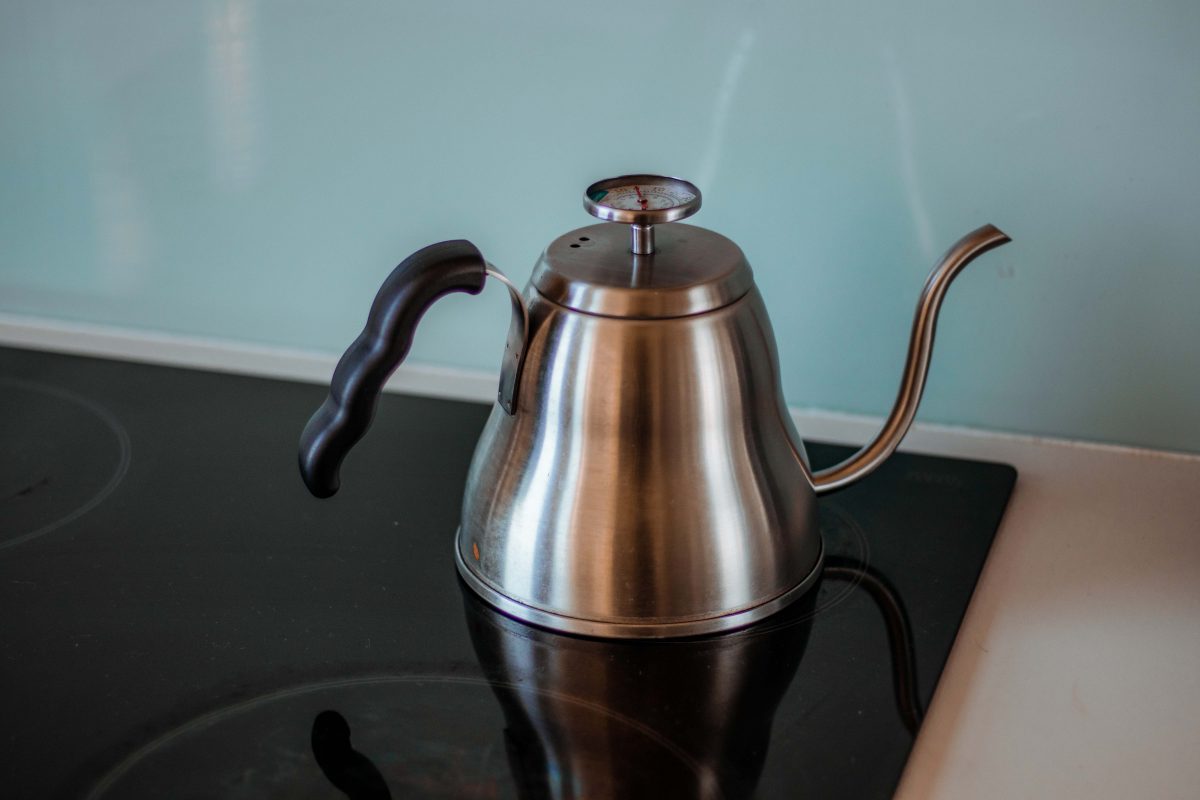

Right off the bat, you have to begin heating up water that you will later need to preheat and clean your French press. This will also be used as an ingredient for your brew. Ideally, the temperature of your water should reach around 195 to 200 degrees Fahrenheit to have the best coffee product.
Since the amount of heat is hard to monitor and requires a water thermometer to measure, you might find it quite hard to make sure you stay within this optimal range. Fret not! You can always opt for just letting the water boil on its own. This will still help you effectively produce a good cup of joe.
Clean and Preheat Your French Press


Once you have boiled enough water, you can then proceed with preheating your french press device. For some, this can be considered as an optional action in the process of how to use a French press. Keep in mind, however, that this is a step that affects your overall coffee quality. Cleaning and preheating your French press helps discard any leftover coffee grounds or residues. These could affect the grit and taste of your brew. Moreover, preheating your coffee-making device will help keep your coffee warm for a much longer time.
To accomplish this step, you will only need to pour some boiling water into your French press beaker. Then, push your coffee plunger down to also include it with this cleaning process. Next, swirl the hot water around to soak the whole device. Lastly, get rid of the hot water to flush out any other leftover residues.
Measure and Grind Coffee Beans


Next, measure the coffee beans that you will use for the French press coffee recipe that you wish to try. Keep in mind that this will affect your coffee’s final taste and strength. In turn, using a scale is optimal and actually crucial for this step.
After acquiring your preferred coffee bean weight, you can then start grinding them. Of course, you can skip this step if you already have pre-ground coffee beans. If not, you can proceed with adjusting your coffee grinder’s setting into “medium-coarse” or “coarse”. After doing so, you can now start grinding the coffee beans of your choice.
Add Hot Water to Ground Coffee Beans
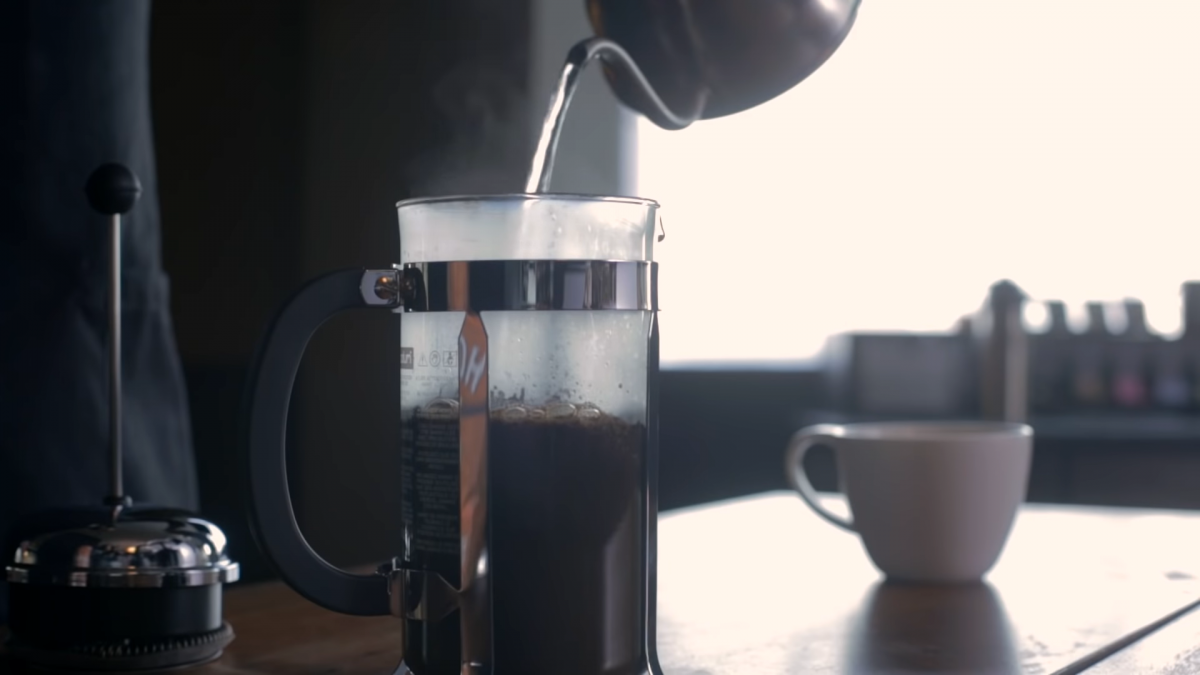

Don’t let your ground coffee beans sit for a long time. Load them up on your French press beaker right away and make sure that they are uniformly evened out. To do this, you simply have to shake your beaker forward and back. Do this in a gentle motion to make sure you don’t spill your grounds. Next, put your loaded-up beaker onto a scale and rebate it to zero. Start pouring your hot water into the beaker to quickly and thoroughly drench your ground coffee beans. Make sure that you are putting precisely the right amount of water according to your preferred water to coffee ratio as well.
Should a scale not be readily available, you can always opt for a measuring cup. Simply pour the right amount of water that aligns with your water to coffee ratio preference into the cup. Once this is done, you can simply pour the measured hot water into your French press beaker.
Let Your Coffee Steep
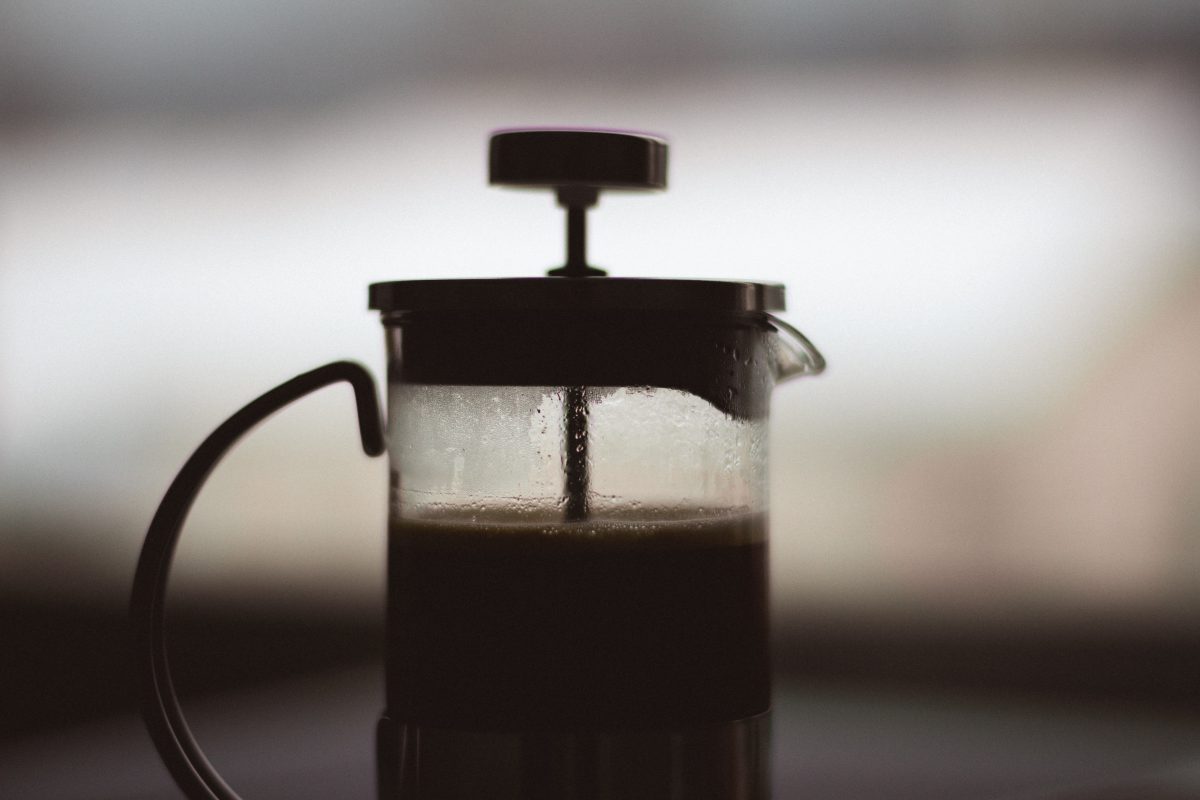

Thoroughly check whether all of your coffee grounds are drenched by carefully using a spoon to stir your mixture. Once you are sure that your grounds and water have combined well, you may promptly cover the beaker with its lid. Doing so will help keep your coffee hot as its brews. Grab your timer and set it to alarm after around three to four minutes for your coffee steeping time. You can adjust this according to your preferred flavor intensity and strength.
Press Down on Your Coffee Plunger
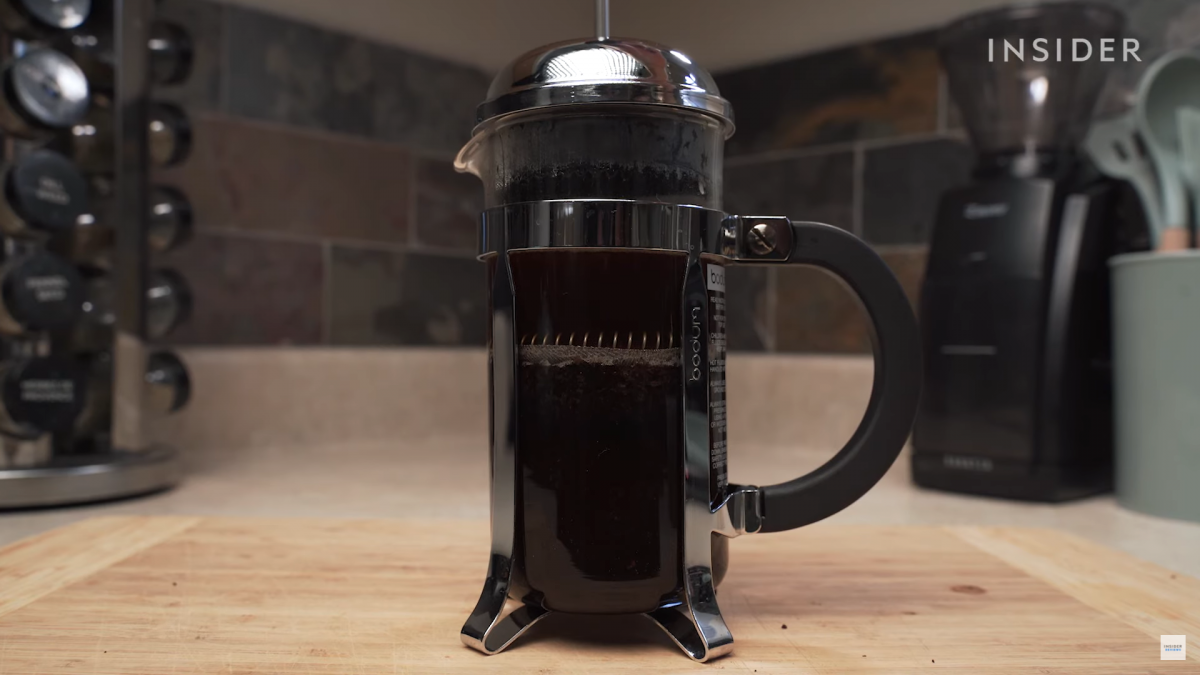

After the waiting game, here comes the most exciting step in the process of how to use a French press. Make sure you promptly and carefully press your coffee plunger down to the bottom of the beaker. Doing so will help you ensure that your coffee mixture won’t go overboard with brewing or flavor extraction.
Take note that if you push down the coffee plunger unyieldingly and almost too effortlessly, it might mean that you over-ground your coffee beans. Relatively, feeling too much resistance as you press down the plunger means that you weren’t able to grind your coffee beans enough.
Serve and Enjoy
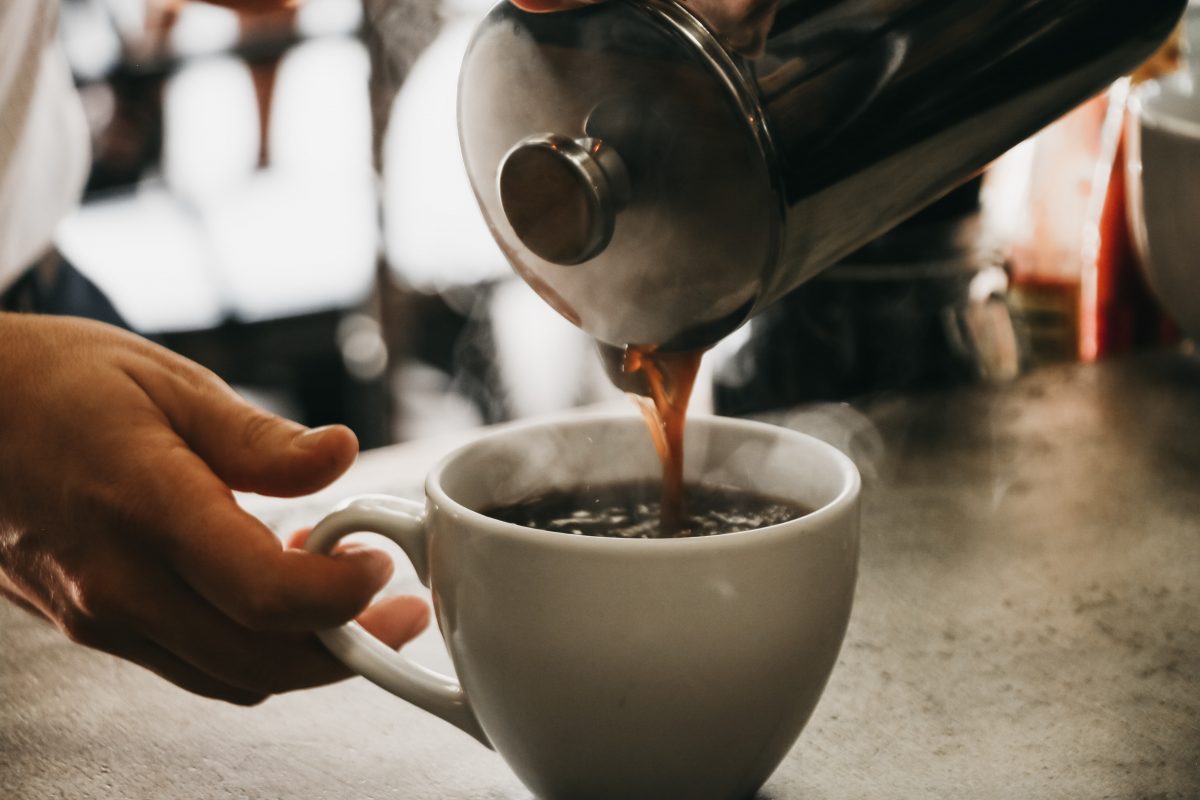

After pushing down the coffee plunger to the bottom of the beaker, you can then start pouring the coffee into a drinking container of your choice. You can enjoy your French press coffee’s full-bodied, strong flavor by drinking it as it is. Moreover, you can also pour milk or add some sugar according to your liking.
Tips for the Best Brew
French Press Coffee Ratio
Avid coffee makers and lovers would know the importance of coffee to water ratio in making the perfect brew. This is undoubtedly among the brewing tips that one must learn to acquire the perfect cup of joe. If you are a beginner or someone who wishes to appreciate coffee more, you can surely benefit from learning more about this, too.
When it comes to French press ratio, there is no one specific guideline that can be applied for all. This is due to how coffee beans differ in qualities, variants, or sources. Aside from these, there are also many other factors that can affect your final brew. The basic rule of thumb is that for every one gram or three tablespoons of coffee, you must use 15 grams or one cup of water. You can start with less than this and later add on the amount until you acquire your preferred taste and strength.
Water Temperature
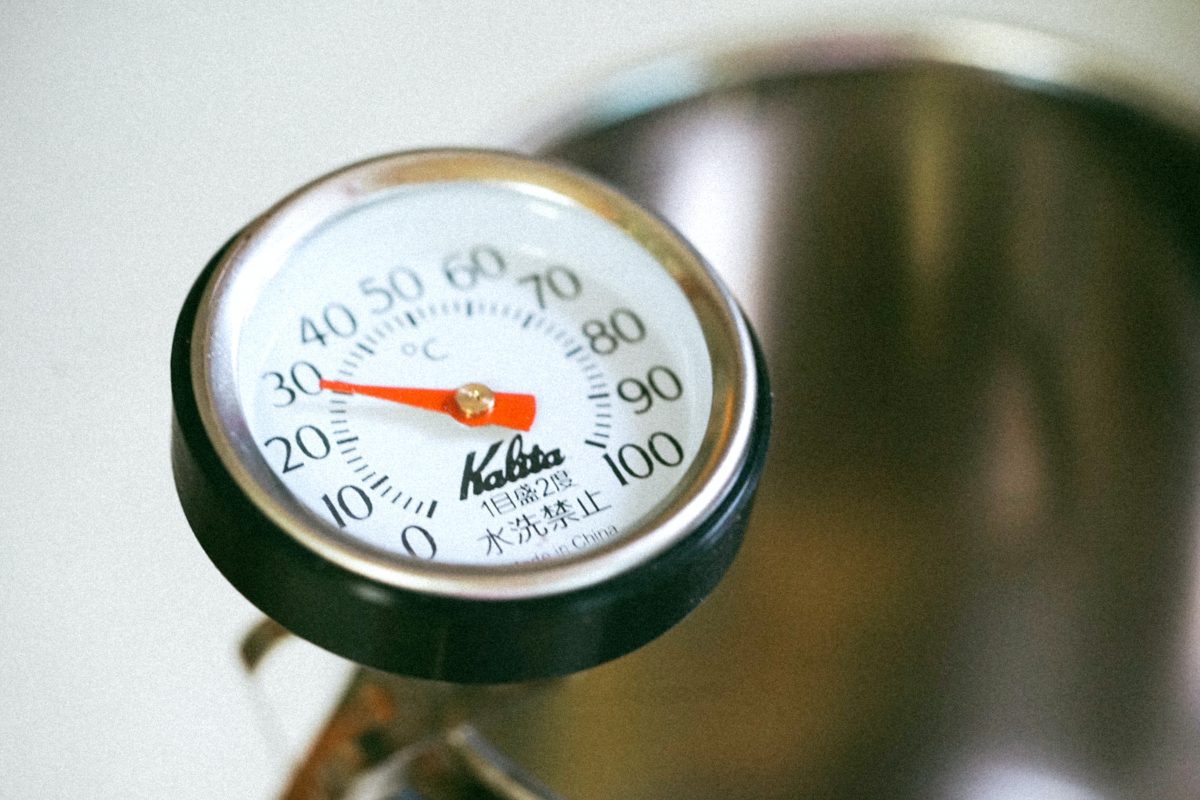

In order to create a perfect batch of coffee every time you use your French press, you must also pay attention to water temperature. The amount of heat that your water possesses can significantly affect the flavor and brew of your coffee. For one, not being able to boil your water enough will fail to maximize your coffee grounds’ flavor potential. So, make sure to heat your water in just the right amount so you’ll be able to extract your ground coffee beans’ flavor thoroughly.
On another note, boiling your water too much can also make the liquid too hot for your ground coffee. When poured onto your grounds, the overly-hot liquid can burn your coffee. To avoid this, you can use a water thermometer to check on the temperature first. If you don’t have one, you can just heat your water until it boils. Once it reaches its boiling point, take it out of the heat source and let it sit for around a minute or two before pouring it into your coffee grounds. This will help ensure that your brew won’t taste bitter or burnt.
Best Coffee Beans for French Press
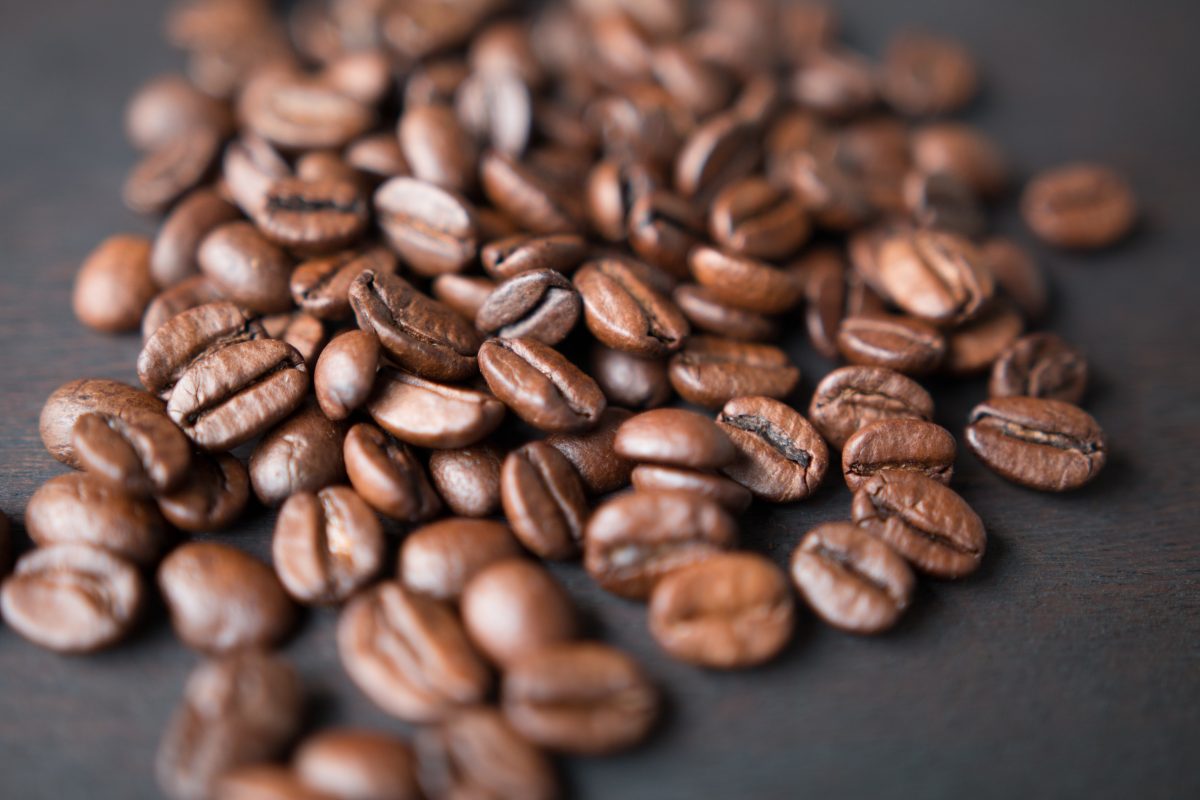

Since there are a lot of types and options out there, choosing the best coffee beans can get tricky and confusing—and understandably so. Keep in mind that choosing the best beans or grounds will always depend on your own preferences. However, there is one factor that can greatly affect your brew’s final flavor, taste, and freshness.
When it comes to coffee beans, opting for whole ones is the best way to go. Unlike pre-ground coffee, whole beans give a fresher and much stronger flavor that equates to a perfect brew. If you still prefer pre-ground coffee beans, you can still go with that option. We suggest adding more into your mixture to give it a stronger flavor and avoid having stale coffee.
Final Thoughts
We hope that this guide helped you understand and appreciate the art of French press coffee. Take note that the steps on how to use a French press may appear complicated at first. Still, the key to a perfect brew is to pay attention to the details and steps that you must do promptly and accurately. Moreover, using the best ingredients and right tools can make the process even more efficient.
Keep in mind that it may take some time and adjustments before you achieve the perfect cup of French press coffee for you. Once you do, it will surely be worth your while—making you feel like the coffee genius that you truly are.

